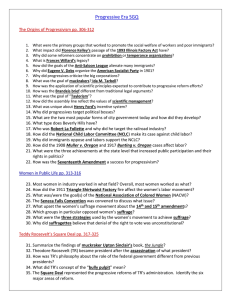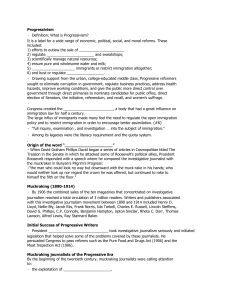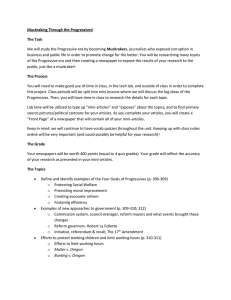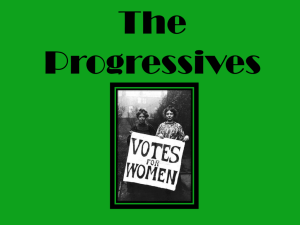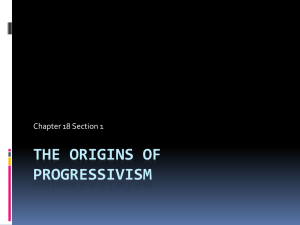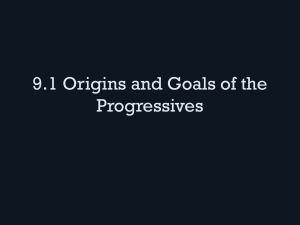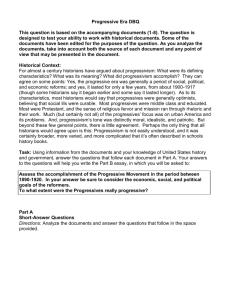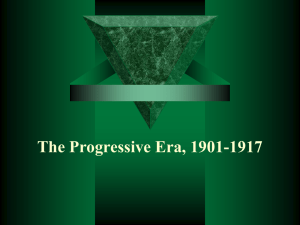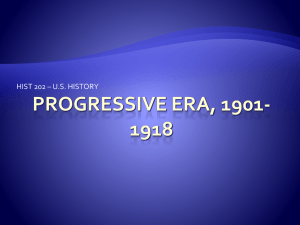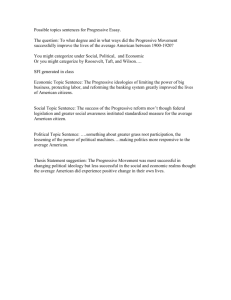Progressive Era: Reforms & Social Change Presentation
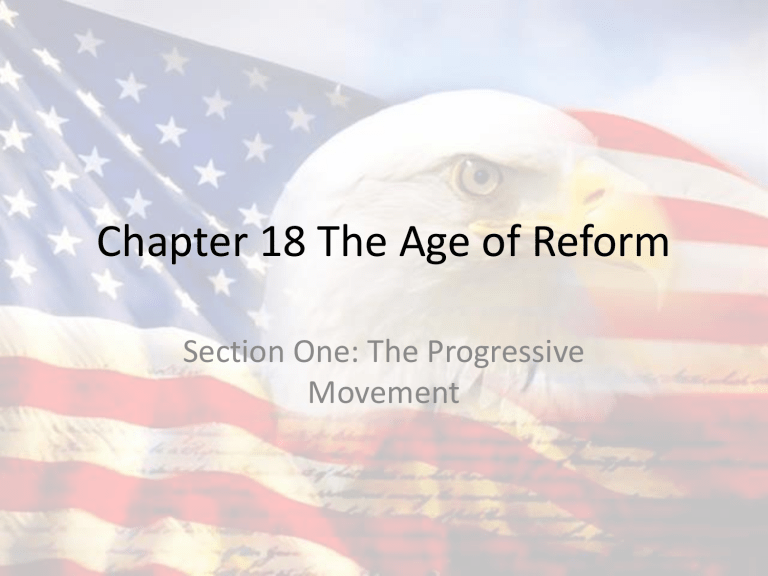
Chapter 18 The Age of Reform
Section One: The Progressive
Movement
I. The Progressive Spirit
A. The Progressives
1. Focused on plight of workers, poor sanitation, corrupt political machines
2. Usually middle or upper class, college educated
B. Women and progressivism
1. Joined as a way to influence politics
II. Progressive Issues
A. A dangerous workplace
1. Steel mill- 25% injured or killed a year
2. Wanted- 8 hr day, minimum wage, safer working conditions, end to child labor
B. Social problems
1. Election reforms
2. Science and technology to solve social problems
III. Inspiration for Reform
A. Muckraking press
1. Spread the message
2. McClure’s Magazine
3. “raked up” and exposed the muck, or filth of society
B. Tarbell and Standard Oil
1. Focused on business practices of
John D. Rockefeller
C. Muckraking books
1. Lincoln Steffens- Shame of Cities
2. Ray Stannard Baker- African American
Injustices, lynching
IV. Writers and Social Problems
A. Harsh effects of industrial society
B. Theodore Dreiser
C. Edith Wharton
D. Herbert Croly
Section Two
Reforming the New Industrial Order
I. Reforming the Workplace
A. 10 hrs a day, 6 days, $1.50 a day= men
B. Female and child laborers
1. Worked for less
C. Labor Laws
1. Limit child labor
2. Improve conditions
3. Limited hours
4. Higher wages- minimum-wage law
II. The Triangle Shirtwaist Fire
A. March 25, 1911, New York City
B. fire in the factory- workers stuck inside
C. 143 workers die in fire
III. Progressivism and the Supreme
Court
A. Most early legislation overturned
B. Fourteenth Amendment- “any person of life, liberty, or property, without due process of law”
IV. Labor Unions
A. Fought for workers
B. AFL- American Federation of Labor
1. Samuel Gompers
C. ILGWU- International Ladies Garment Workers
Union
1. “Uprising of 20,000”- strike
2. Mixed results
D. IWW- Industrial Workers of the World
1. Socialist
2. Short lived
Section Three
Reforming Society
I. Cleaning up the city
A. Cleaning up
1. Better housing, improve public education
2. Garbage collection ,health care, police, and fire protection
3. Playgrounds and parks
B. City planning
1. Park construction, building codes, sanitation standards, and zoning
II. Moral Reform
A. The passage of prohibition
1. Anti-Saloon League and the Woman’s Christian
Temperance Union
2. Eighteenth Amendment- 1917
3. Repealed in 1933
B. Moviegoing
1. 5 or 10 cent movie ticket
2. Nickelodeons
3. Reformers demanded that movies be censored
III. Progressives and Racial
Discrimination
A. Views of Du Bois
1. African American influential leader
2. Early civil rights leader
B. African Americans organize
1. National Association for the Advancement of Colored
People- NAACP- 1909
2. Used court system
3. National Urban League
4. Fought for civil rights
C. American Indians
1. Society of American Indians
IV. Immigrants and Assimilation
A. Mixed results
B. discrimination
C. Americanization- assimilation
1. Taught to read, write, and speak English
Assignment
– You are to plan your own Industrial city. On a piece of paper sketch a city that will attract employers and residents. Include in your sketch all improvements that were covered in the last few chapters.
– Should be included:
• Jobs- Industrial center
• Residential
• Parks library
Social Services- police station,
Fire, etc.
• Sports and leisure
• Schools streets suburbs
